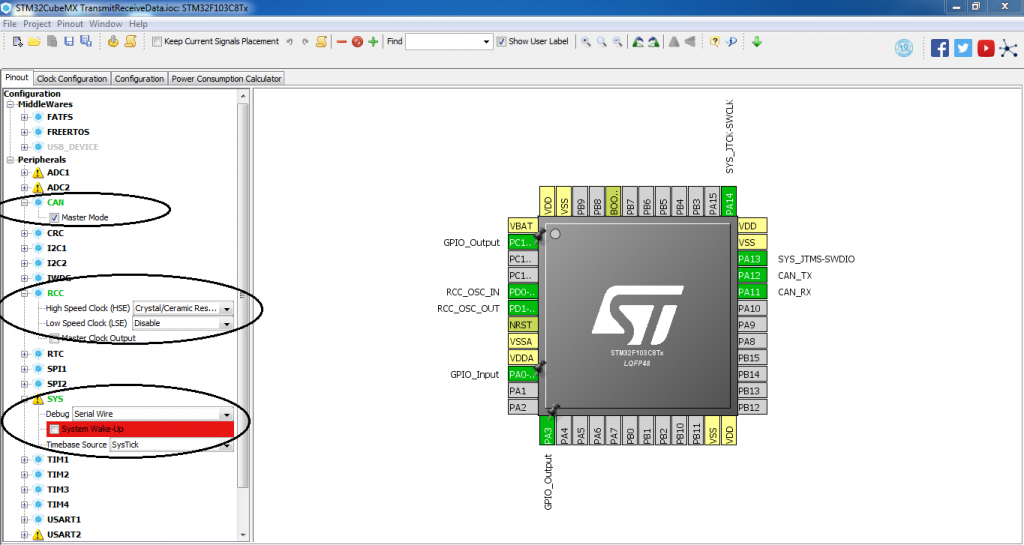首页
name generate_binary_structure is not defined
name generate_binary_structure is not defined
时间: 2023-04-12 22:02:08
浏览: 123
这是一个编程类的问题,我可以回答。这个错误通常是因为没有正确导入相应的模块或库导致的。你需要检查你的代码中是否正确导入了相关的模块或库,并且确保你的代码中没有拼写错误或语法错误。如果你需要更多的帮助,可以提供更多的上下文或代码片段,我可以尽力帮助你解决这个问题。
阅读全文
立即开通
100%中奖
相关推荐
Xcode_Build_Setting_Reference
It is automatically populated based on the target name but can be overridden if needed. The product name is used in various paths and files generated during the build process. ##### PROJECT_NAME The...
FlexGraphics_V_1.79_D4-XE10.2_Downloadly.ir
connector's end point moving, the link is breaks if the move was not on one of the flex-controls connection points. Contain False as default. - ADD Added ControlDocRect parameter in event ...
一个win32下的ARM开源编译器
This package is an ARM assembler add-on for FASM. FASMARM currently supports the full range of instructions for 32-bit and 64-bit ARM processors and coprocessors up to and including v8. Contents: ...
utlog.sqlite
utlog.sqlite
钢结构原理课程设计:露顶式平面钢闸门设计任务及指南
内容概要:本文档为《钢结构原理》课程设计任务及指导书,主要面向水利水电工程专业的学生。详细介绍了课程设计的目的,旨在帮助学生掌握钢结构基本理论以及相关规范的使用方法,培养独立分析和解决实际工程问题的能力。提供了设计所需的背景资料,如提升式平面钢闸门的相关参数及其启动装置、选用材料等。具体的设计内容包括但不限于了解任务要求,确定结构形式,设计面板及各类梁的设计计算。同时提出了明确的设计要求和成果形式。 适合人群:水利水电工程专业的本科生或研究生,尤其是已学习过《钢结构原理》课程的学生。 使用场景及目标:通过本任务的学习和实践,学生能加深对钢结构设计理念的理解,在实际操作过程中学会应用国家最新规范进行结构设计计算,提升个人的专业能力和项目经验。 阅读建议:结合课本内容及相关行业规范认真阅读和准备设计方案,注意手绘图纸的质量和技术报告的撰写要求。
springboot-vue-数计学院学生综合素质评价系统的设计与实现-源码工程-29页从零开始全套图文详解-28页设计论文-21页答辩ppt-全套开发环境工具、文档模板、电子教程、视频教学资源分享
资源说明: 1:29页图文详解文档(从零开始项目全套环境工具安装搭建调试运行部署,保姆级图文详解)。 2:28页毕业设计论文,万字长文,word文档,支持二次编辑。 3:21页答辩ppt,pptx格式,支持二次编辑。 4:工具环境、ppt参考模板、相关教程资源分享。 5:资源项目源码均已通过严格测试验证,保证能够正常运行,本项目仅用作交流学习参考,请切勿用于商业用途。 6:项目问题、技术讨论,可以给博主私信或留言,博主看到后会第一时间与您进行沟通。 内容概要: 本系统基于 B/S 网络结构,在 IDEA 中开发。服务端用 Java 并借 Spring Boot 框架搭建后台。前台采用支持 HTML5 的 VUE 框架。用 MySQL 存储数据,可靠性强。 能学到什么: 理解 B/S 结构在分布式系统优势,熟练运用 IDEA 及相关工具流程开发 Java 项目。后端可掌握 Java 编程技巧,学会用 Spring Boot 搭建后台,体会便利以提升效率、专注业务。前端能掌握 VUE 框架构建交互界面,还会使用 MySQL 存储管理数据。此外,能了解前后端数据交互,掌握打包部署流程。
四相交错并联同步整流Buck变器 MATLAB仿真 低压大电流 输入:12VDC 输出:1V 100A 单相电流25A 关键参数设计,磁元件设计 理想仿真,实现均流输出
四相交错并联同步整流Buck变器 MATLAB仿真 低压大电流 输入:12VDC 输出:1V 100A 单相电流25A 关键参数设计,磁元件设计 理想仿真,实现均流输出
Python机器人-这是机器人算法的 Python 代码集合
这是机器人算法的 Python 代码集合。 特征: 1.易于阅读,便于理解每个算法的基本思想。 2.选择了广泛使用且实用的算法。 3.最小依赖性。 如何使用: 克隆此存储库。 git clone https://github.com/AtsushiSakai/PythonRobotics.git 安装所需的库。 使用 conda : conda env create -f requirements/environment.yml 使用 pip : pip install -r requirements/requirements.txt
mellitz_3dj_01_2411.zip
mellitz_3dj_01_2411
Shell编程范例完整版PDF最新版本
Shell是一种程序设计语言,具有双重角色:一方面,它作为一种命令语言,能够交互式地解释和执行用户输入的命令,或者自动地解释和执行一系列预先设定的命令;另一方面,作为一种程序设计语言,Shell定义了各种变量和参数,并提供了高级语言中常见的控制结构,例如循环和分支。 与常规的Shell书籍不同,本书并未深入探讨Shell的语法细节,而是采用面向“对象”的方法,通过大量实例来介绍Shell的日常操作。这些“对象”包括数值、逻辑值、字符串、文件、进程和文件系统等。这种方法有助于在实际应用中激发学习者的兴趣,并可作为Shell编程的参考手册,方便随时查阅。
MMC-HVDC仿真模型,pscad柔性直流输电仿真mmc仿真模型,双端mmc模型,MMC为21电平NLM和均压控制,还有多端如张北直流电网以及基本mmc逆变器,自己为biye网上收集的一些觉得有用的
MMC-HVDC仿真模型,pscad柔性直流输电仿真mmc仿真模型,双端mmc模型,MMC为21电平NLM和均压控制,还有多端如张北直流电网以及基本mmc逆变器,自己为biye网上收集的一些觉得有用的基础模型
MATLAB金属表面缺陷分析(面板).rar
MATLAB金属表面缺陷分析(面板).rar
python项目实战之旅游推荐数据分析可视化(源码+部署说明).zip
本项目主要针对计算机相关专业的正在做毕设的学生和需要项目实战练习的Python学习者,也可作为课程设计、期末大作业。 项目都经过严格调试,确保可以运行! 包含:项目源码、数据库、部署说明,该项目可以直接作为毕设使用。 【项目技术】 python+Django+mysql+协同过滤算法 【实现功能】 用户功能:登录注册,个人信息管理功能,景区浏览功能,评分收藏功能,推荐功能。 管理员功能:管理景区信息,包括添加、修改、删除景区。管理员可以对景区的类型进行分类和管理,方便用户在搜索和浏览景区时进行筛选。同时,管理员可以对景区的信息进行管理,包括添加、修改和删除景区的详细介绍、图片等内容。 管理用户信息,包括查看、修改用户资料。管理员可以查看和管理系统中的用户信息,包括用户的注册信息、行为记录等。
西门子1200与ABB机器人TCP 通信案例.zip
西门子1200与ABB机器人TCP 通信案例.zip
森林草原防灭火指挥系统解决方案(和对讲)PPT(44页).pptx
智慧林业的兴起与内涵 智慧林业,作为林业现代化的重要标志,是信息技术在林业领域的深度融合与应用。它不仅仅是技术的堆砌,更是林业管理方式的根本性变革。智慧林业强调集中展现、数据整合、万物互联、人工智能、云计算等先进技术的综合运用,以实现林业资源的高效监管、灾害的及时预警和生态的可持续发展。通过数据分析和智能分析,智慧林业能够实现对林业资源的精确掌握和科学规划,为决策者提供强有力的数据支持。 在智慧林业的视角下,林业资源的监管变得更加智能化和精细化。利用卫星遥感、无人机巡查、物联网监测等手段,可以实现对林业资源的全天候、全方位监控。同时,结合大数据分析和人工智能技术,可以对林业数据进行深度挖掘和分析,发现潜在的风险和问题,为林业资源的保护和管理提供科学依据。 智慧林业的构建与管理 智慧林业的构建是一个系统工程,需要从多个方面入手。首先,需要建立完善的林业信息化基础设施,包括网络、数据中心、应用平台等。其次,要推动林业数据的整合和共享,打破信息孤岛,实现数据的互联互通。此外,还需要加强林业信息化人才的培养和引进,为智慧林业的发展提供有力的人才保障。 在智慧林业的管理方面,需要建立科学的管理体系和运行机制。一方面,要加强林业信息化的标准化建设,制定统一的数据标准和交换规范,确保数据的准确性和一致性。另一方面,要建立完善的信息安全体系,保障林业数据的安全和隐私。同时,还需要推动林业信息化的创新和应用,鼓励企业和科研机构积极参与智慧林业的建设和发展。 在具体的管理实践中,智慧林业可以通过建立智能预警系统、虚拟现实展示平台、数据分析应用平台等,实现对林业资源的实时监测、预警和决策支持。这些平台不仅能够提高林业管理的效率和准确性,还能够增强公众的参与感和满意度,推动林业事业的可持续发展。 智慧林业的典型应用与前景展望 智慧林业已经在全球范围内得到了广泛应用。例如,在德国,FIRE-WATCH林业火灾自动预警系统的应用有效提高了火灾的预警和响应能力;在美国,利用卫星和无人机进行林业资源的监测和灾害预警已经成为常态;在加拿大,智慧林业技术的应用也取得了显著成效。 在中国,智慧林业的应用也在不断深入。通过智慧林业系统,可以实现对林业资源的精准监管和高效利用。例如,云南昆明的平安森林监控项目通过视频监控和数据分析技术,有效提高了森林资源的保护和管理水平;西藏林业厅木材检查站项目则通过信息化手段实现了对木材运输的全程监管和追溯。 展望未来,智慧林业将继续在林业现代化进程中发挥重要作用。随着物联网、大数据、人工智能等技术的不断发展,智慧林业的应用将越来越广泛和深入。通过不断创新和应用,智慧林业将推动林业资源的可持续利用和生态文明的建设,为人类的可持续发展做出更大贡献。同时,智慧林业的发展也将为写方案的读者提供丰富的灵感和案例借鉴,推动更多创新方案的涌现。
Java源码ssm框架社区生活超市进销存购物商城管理-毕业设计论文-期末大作业.rar
本项目是一个基于Java SSM框架的社区生活超市进销存购物商城管理系统,旨在为社区超市提供一个全面、高效的管理平台。系统集成了商品管理、库存管理、销售管理、采购管理、用户管理和财务管理等多项功能。通过该系统,超市管理人员可以方便地进行商品的录入、更新、查询,实时监控库存情况,自动处理进货和销售记录,并生成各类财务报表。SSM框架的使用,使得系统具备了良好的扩展性和维护性,能够适应未来业务的增长和变化。项目的开发不仅提高了超市的管理效率,还优化了顾客的购物体验,为社区超市的数字化转型提供了有力支持。该项目为完整毕设源码,先看项目演示,希望对需要的同学有帮助。
基于springboot的师生共评的作业管理系统设计与实现源码(java毕业设计完整源码+LW).zip
本师生共评的作业管理系统管理员,学生,教师,组长共四个权限。 管理员有管理所有基本信息的功能。教师功能:个人中心,小组信息管理,课程管理,作业管理,作业互评管理,作业评分管理。组长是教师进行设定的,主要协助教师管理作业相关事宜。学生功能:个人中心,课程管理,作业管理,作业互评管理,作业评分管理,作业提交管理。因而具有一定的实用性。 项目包含完整前后端源码和数据库文件 环境说明: 开发语言:Java 框架:springboot,mybatis JDK版本:JDK1.8 数据库:mysql 5.7 数据库工具:Navicat11 开发软件:eclipse/idea Maven包:Maven3.3
口腔诊所系统-JAVA-基于SpringBoot的口腔诊所系统的设计与实现
以下是口腔诊所系统的功能描述: 1. 用户注册与登录 患者注册:新患者可以通过电子邮件或手机号码进行注册。 医生注册:口腔医生可注册并填写专业信息、执业证书等。 身份验证:系统需对患者和医生身份进行验证。 2. 患者管理 患者信息管理:记录患者的基本信息、联系方式、医疗历史及过敏史。 预约管理:患者可以在线预约就诊,选择医生和时间。 3. 医生管理 医生信息展示:展示医生的个人资料、专业领域、评价和排班情况。 医生排班:医生可以管理自己的工作日程及可接诊的患者数量。 4. 预约系统 在线预约:患者可以查看医生的可用时间,并在线预约。 预约提醒:系统自动发送预约确认和提醒通知(短信或邮件)。 5. 诊疗记录管理 电子病历:医生可以为每位患者建立电子病历,包括诊断结果、治疗方案、处方等信息。 病历查询:医生和患者均可查询历史诊疗记录。 6. 费用管理 收费标准:清晰列出各项服务的收费标准(检查、治疗、手术等)。 在线支付:患者可以通过多种支付方式(支付宝、微信支付、信用卡)完成费用支付。 账单管理:患者可查看历史账单及支付状态。 7. 疗程管理 治疗方案制定:医生根据患者情况制定个性化的
机械设计互感器电流测试台(sw21可编辑+工程图)全套设计资料100%好用.zip
机械设计互感器电流测试台(sw21可编辑+工程图)全套设计资料100%好用.zip
Weka.jar包文件
Weka.jar包文件
CSDN会员
开通CSDN年卡参与万元壕礼抽奖
海量
VIP免费资源
千本
正版电子书
商城
会员专享价
千门
课程&专栏
全年可省5,000元
立即开通
全年可省5,000元
立即开通
大家在看
ISO IEC 38505-1中文版.pdf
ISO IEC 38505-1中文版.pdf
The Seasoned Schemer高清PDF
计算机界大牛Daniel P. Friedman写的Scheme进阶书籍,采用问答式的写法,非常苏格拉底,对Scheme有兴趣的朋友推荐下载阅读。
中国电力建设协会 调试工程师题库
中国电力建设协会 调试工程师题库,本题库为电网专业 调试总工程师考试题库。有志于考取调总的,本题库十分有用。
36V转5V,36V转3.3V电源电路图,降压芯片规格书.pdf
PW2558 开发了一种高效的异步降压 DC/DC 调节器输出 0.8A 电流。集成电路采用电流模 式自适应恒关断时间控制。这个 PW2558 可在 4.5V 至 55V 的宽输入电压范围内工作, 并将主开关与非常低的 RDS(开),以最小化传导损耗。输出电压纹波低,外部电压小 电感器和电容器的尺寸以 1.2MHz 的开关频率实现。
【蒙特卡洛模拟】这个项目旨在通过强化学习和蒙特卡洛模拟的结合,解决银行购买股票的最优策略和预期利润折现率的问题KL.zip
【蒙特卡洛模拟】这个项目旨在通过强化学习和蒙特卡洛模拟的结合,解决银行购买股票的最优策略和预期利润折现率的问题【KL】.zip
最新推荐
utlog.sqlite
utlog.sqlite
易语言例程:用易核心支持库打造功能丰富的IE浏览框
资源摘要信息:"易语言-易核心支持库实现功能完善的IE浏览框" 易语言是一种简单易学的编程语言,主要面向中文用户。它提供了大量的库和组件,使得开发者能够快速开发各种应用程序。在易语言中,通过调用易核心支持库,可以实现功能完善的IE浏览框。IE浏览框,顾名思义,就是能够在一个应用程序窗口内嵌入一个Internet Explorer浏览器控件,从而实现网页浏览的功能。 易核心支持库是易语言中的一个重要组件,它提供了对IE浏览器核心的调用接口,使得开发者能够在易语言环境下使用IE浏览器的功能。通过这种方式,开发者可以创建一个具有完整功能的IE浏览器实例,它不仅能够显示网页,还能够支持各种浏览器操作,如前进、后退、刷新、停止等,并且还能够响应各种事件,如页面加载完成、链接点击等。 在易语言中实现IE浏览框,通常需要以下几个步骤: 1. 引入易核心支持库:首先需要在易语言的开发环境中引入易核心支持库,这样才能在程序中使用库提供的功能。 2. 创建浏览器控件:使用易核心支持库提供的API,创建一个浏览器控件实例。在这个过程中,可以设置控件的初始大小、位置等属性。 3. 加载网页:将浏览器控件与一个网页地址关联起来,即可在控件中加载显示网页内容。 4. 控制浏览器行为:通过易核心支持库提供的接口,可以控制浏览器的行为,如前进、后退、刷新页面等。同时,也可以响应浏览器事件,实现自定义的交互逻辑。 5. 调试和优化:在开发完成后,需要对IE浏览框进行调试,确保其在不同的操作和网页内容下均能够正常工作。对于性能和兼容性的问题需要进行相应的优化处理。 易语言的易核心支持库使得在易语言环境下实现IE浏览框变得非常方便,它极大地降低了开发难度,并且提高了开发效率。由于易语言的易用性,即使是初学者也能够在短时间内学会如何创建和操作IE浏览框,实现网页浏览的功能。 需要注意的是,由于IE浏览器已经逐渐被微软边缘浏览器(Microsoft Edge)所替代,使用IE核心的技术未来可能面临兼容性和安全性的挑战。因此,在实际开发中,开发者应考虑到这一点,并根据需求选择合适的浏览器控件实现技术。 此外,易语言虽然简化了编程过程,但其在功能上可能不如主流的编程语言(如C++, Java等)强大,且社区和技术支持相比其他语言可能较为有限,这些都是在选择易语言作为开发工具时需要考虑的因素。 文件名列表中的“IE类”可能是指包含实现IE浏览框功能的类库或者示例代码。在易语言中,类库是一组封装好的代码模块,其中包含了各种功能的实现。通过在易语言项目中引用这些类库,开发者可以简化开发过程,快速实现特定功能。而示例代码则为开发者提供了具体的实现参考,帮助理解和学习如何使用易核心支持库来创建IE浏览框。
管理建模和仿真的文件
管理Boualem Benatallah引用此版本:布阿利姆·贝纳塔拉。管理建模和仿真。约瑟夫-傅立叶大学-格勒诺布尔第一大学,1996年。法语。NNT:电话:00345357HAL ID:电话:00345357https://theses.hal.science/tel-003453572008年12月9日提交HAL是一个多学科的开放存取档案馆,用于存放和传播科学研究论文,无论它们是否被公开。论文可以来自法国或国外的教学和研究机构,也可以来自公共或私人研究中心。L’archive ouverte pluridisciplinaire
STM32F407ZG引脚功能深度剖析:掌握引脚分布与配置的秘密(全面解读)
 # 摘要 本文全面介绍了STM32F407ZG微控制器的引脚特性、功能、配置和应用。首先概述了该芯片的引脚布局,然后详细探讨了标准外设、高级控制以及特殊功能引脚的不同配置和使用方法。在此基础上,文章深入分析了引脚模式配置、高级配置技巧,并提供了实际应用案例,如LED控制和串口通信。在设计方面,阐述了引脚布局策略、多层板设计及高密度引脚应用的解决方案。最后,介绍
给出文档中问题的答案代码
您提到的是需要编写MATLAB代码来实现文档中的实验任务。以下是根据文档内容编写的MATLAB代码示例: ```matlab % 上机2 实验代码 % 读取输入图像 inputImage = imread('your_face_image.jpg'); % 替换为您的图像文件路径 if size(inputImage, 1) < 1024 || size(inputImage, 2) < 1024 error('图像尺寸必须大于1024x1024'); end % 将彩色图像转换为灰度图像 grayImage = rgb2gray(inputImage); % 调整图像大小为5
Docker构建与运行Next.js应用的指南
资源摘要信息:"rivoltafilippo-next-main" 在探讨“rivoltafilippo-next-main”这一资源时,首先要从标题“rivoltafilippo-next”入手。这个标题可能是某一项目、代码库或应用的命名,结合描述中提到的Docker构建和运行命令,我们可以推断这是一个基于Docker的Node.js应用,特别是使用了Next.js框架的项目。Next.js是一个流行的React框架,用于服务器端渲染和静态网站生成。 描述部分提供了构建和运行基于Docker的Next.js应用的具体命令: 1. `docker build`命令用于创建一个新的Docker镜像。在构建镜像的过程中,开发者可以定义Dockerfile文件,该文件是一个文本文件,包含了创建Docker镜像所需的指令集。通过使用`-t`参数,用户可以为生成的镜像指定一个标签,这里的标签是`my-next-js-app`,意味着构建的镜像将被标记为`my-next-js-app`,方便后续的识别和引用。 2. `docker run`命令则用于运行一个Docker容器,即基于镜像启动一个实例。在这个命令中,`-p 3000:3000`参数指示Docker将容器内的3000端口映射到宿主机的3000端口,这样做通常是为了让宿主机能够访问容器内运行的应用。`my-next-js-app`是容器运行时使用的镜像名称,这个名称应该与构建时指定的标签一致。 最后,我们注意到资源包含了“TypeScript”这一标签,这表明项目可能使用了TypeScript语言。TypeScript是JavaScript的一个超集,它添加了静态类型定义的特性,能够帮助开发者更容易地维护和扩展代码,尤其是在大型项目中。 结合资源名称“rivoltafilippo-next-main”,我们可以推测这是项目的主目录或主仓库。通常情况下,开发者会将项目的源代码、配置文件、构建脚本等放在一个主要的目录中,这个目录通常命名为“main”或“src”等,以便于管理和维护。 综上所述,我们可以总结出以下几个重要的知识点: - Docker容器和镜像的概念以及它们之间的关系:Docker镜像是静态的只读模板,而Docker容器是从镜像实例化的动态运行环境。 - `docker build`命令的使用方法和作用:这个命令用于创建新的Docker镜像,通常需要一个Dockerfile来指定构建的指令和环境。 - `docker run`命令的使用方法和作用:该命令用于根据镜像启动一个或多个容器实例,并可指定端口映射等运行参数。 - Next.js框架的特点:Next.js是一个支持服务器端渲染和静态网站生成的React框架,适合构建现代的Web应用。 - TypeScript的作用和优势:TypeScript是JavaScript的一个超集,它提供了静态类型检查等特性,有助于提高代码质量和可维护性。 - 项目资源命名习惯:通常项目会有一个主目录,用来存放项目的源代码和核心配置文件,以便于项目的版本控制和团队协作。 以上内容基于给定的信息进行了深入的分析,为理解该项目的构建、运行方式以及技术栈提供了基础。在实际开发中,开发者应当参考更详细的文档和指南,以更高效地管理和部署基于Docker和TypeScript的Next.js项目。
"互动学习:行动中的多样性与论文攻读经历"
多样性她- 事实上SCI NCES你的时间表ECOLEDO C Tora SC和NCESPOUR l’Ingén学习互动,互动学习以行动为中心的强化学习学会互动,互动学习,以行动为中心的强化学习计算机科学博士论文于2021年9月28日在Villeneuve d'Asq公开支持马修·瑟林评审团主席法布里斯·勒菲弗尔阿维尼翁大学教授论文指导奥利维尔·皮耶昆谷歌研究教授:智囊团论文联合主任菲利普·普雷教授,大学。里尔/CRISTAL/因里亚报告员奥利维耶·西格德索邦大学报告员卢多维奇·德诺耶教授,Facebook /索邦大学审查员越南圣迈IMT Atlantic高级讲师邀请弗洛里安·斯特鲁布博士,Deepmind对于那些及时看到自己错误的人...3谢谢你首先,我要感谢我的两位博士生导师Olivier和Philippe。奥利维尔,"站在巨人的肩膀上"这句话对你来说完全有意义了。从科学上讲,你知道在这篇论文的(许多)错误中,你是我可以依
【热传递模型的终极指南】:掌握分类、仿真设计、优化与故障诊断的18大秘诀
 # 摘要 热传递模型在工程和物理学中占有重要地位,对于提高热交换效率和散热设计至关重要。本文系统性地介绍了热传递模型的基础知识、分类以及在实际中的应用案例。文章详细阐述了导热、对流换热以及辐射传热的基本原理,并对不同类型的热传递模型进行了分类,包括稳态与非稳态模型、一维到三维模型和线性与非线性模型。通过仿真设计章节,文章展示了如何选择合适的仿真软件、构建几何模型、设置材料属性和
python经典题型和解题代码
Python的经典题型通常涵盖了基础语法、数据结构、算法、函数式编程、文件操作、异常处理以及网络爬虫等内容。以下是一些常见的题目及其简单示例: 1. **基础题**: - 示例:打印九九乘法表 ```python for i in range(1, 10): print(f"{i} * {i} = {i*i}") ``` 2. **数据结构**: - 示例:实现队列(使用列表) ```python class Queue: def __init__(self):
宠物控制台应用程序:Java编程实践与反思
资源摘要信息:"宠物控制台:统一编码练习" 本节内容将围绕PetStore控制台应用程序的开发细节进行深入解析,包括其结构、异常处理、toString方法的实现以及命令行参数的应用。 标题中提到的“宠物控制台:统一编码练习”指的是创建一个用于管理宠物信息的控制台应用程序。这个项目通常被用作学习编程语言(如Java)和理解应用程序结构的练习。在这个上下文中,“宠物”一词代表了应用程序处理的数据对象,而“控制台”则明确了用户与程序交互的界面类型。 描述部分反映了开发者在创建这个控制台应用程序的过程中遇到的挑战和学习体验。开发者提到,这是他第一次不依赖MVC RESTful API格式的代码,而是直接使用Java编写控制台应用程序。这表明了从基于Web的应用程序转向桌面应用程序的开发者可能会面临的转变和挑战。 在描述中,开发者提到了关于项目结构的一些想法,说明了项目结构不是完全遵循约定,部分结构是自行组合的,部分是从实践中学习而来的。这说明了开发者在学习过程中可能会采用灵活的编码实践,以适应不同的编程任务。 异常处理是编程中的一个重要方面,开发者表示在此练习中没有处理异常,而是通过避免null值来“闪避”一些潜在的问题。这可能表明开发者更关注于快速原型的实现,而不是在学习阶段就深入处理异常情况。虽然这样的做法在实际项目中是不被推荐的,但它可以帮助初学者快速理解程序逻辑。 在toString方法的实现上,开发者明确表示该方法并不遵循常规的约定,而是为了让控制台读数更易于人类阅读,这表明开发者在这个阶段更注重于输出结果的可读性,而不是遵循某些严格的编程习惯。 最后,开发者谈到了希望包括一些命令行参数来控制数据输出,但因为这不是最小可行性产品(MVP)的一部分,所以没有实现。在Java等语言中,使用命令行参数是控制应用程序行为的常见做法,通常通过解析`main`方法的`args`参数来实现。 标签中提到的"Java"是本练习的主要编程语言。Java是一种广泛使用的通用编程语言,它特别适合于大型系统开发。Java编写的控制台应用程序能够跨平台运行,因为Java虚拟机(JVM)为它提供了跨平台的兼容性。 从提供的文件名称列表“pet-console-develop”可以推测出,这个文件夹可能包含了所有与开发PetStore控制台应用程序相关的源代码、文档和其他资源。由于开发者提到的是“练习”,可以推断这是一个用于学习和实验的项目,而非一个完整的商业软件。 总结以上分析,PetStore控制台应用程序是一个用于教学目的的Java项目,它提供了对于控制台应用程序结构、异常处理、方法重写以及命令行参数使用等方面的实践学习。这个练习可以帮助初学者或经验较少的开发者学习如何构建简单的桌面应用程序,并逐步理解更多的编程概念。